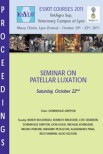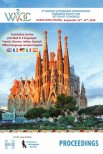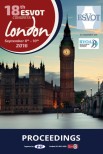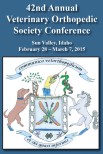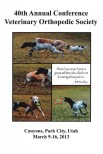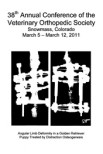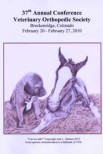Elbow joint incongruity is recognized as an important factor in the development, treatment, and prognosis of canine elbow dysplasia. Elbow incongruity has been measured based on radiographic joint space widths, however these values can be affected by the degree of elbow joint flexion. Recent studies have reported radiographic curvature radii as more precise measures of humeroulnar congruity in dogs.
The aim of this prospective observational study was to describe radiographic curvature radii measured from flexed and extended elbow radiographs for a sample of dogs representing a medium breed (Portuguese Pointing Dog) and a large breed (Estrela Mountain Dog). The curvature radii from the ulnar trochlear notch and humeral trochlea were measured in 114 mediolateral elbow extended radiographic views (30 Portuguese Pointing Dog and 27 Estrela Mountain Dog), and 84 mediolateral flexed views (22 Portuguese Pointing Dog and 20 Estrela Mountain Dog). The sampled animals' ages ranged from 12 to 84 months (34.6 ± 17.8 months).
Good agreement was observed between curvature radii measurements for flexed vs. extended views in both breed groups. Ulnar trochlear notch curvature radii measurements were greater than humeral trochlea curvature radii measurements in both breed groups. Both curvature radii were greater in the large-breed dog group vs. the medium-breed dog group. Both breed groups had ulnar and humeral curves with similar typology. However, the large breed group had greater intermediate differences between the humeroulnar surface curvature radii.
Results from this study supported the use of curvature radii as measures of humeroulnar congruity in mediolateral flexed elbow radiographs of medium and large breed dogs.
Radiographic assessment of humeroulnar congruity in a medium and a large breed of dog
Journal
Alves-Pimenta S, Colaço B, Fernandes AM, Gonçalves L, Colaço J, Melo-Pinto P, Ginja MM. Vet Radiol Ultrasound. 2017 Jun 30. [Epub ahead of print]
